What is Athens
The cradle of democracy and civilization: yet, beyond its rich history, Athens is a vibrant modern European city with an old-town feel; ancient monuments fuse with a trendy, cosmopolitan scene. Masterpieces of significant architectural values stand tall today in a harmonious coexistence with impressive modern buildings.
German architect Ernst Ziller designed some of Athens’ most iconic buildings, giving the city the architectural identity and aesthetics needed as the capital of the new Greek state. The Presidential Mansion, Iliou Melathron (which houses the Numismatic Museum of Athens today), the National Theater, and the National Archaeological Museum give only a small example of Ziller’s heritage. On the other hand, modern buildings of high architectural value such as the House of Letters and Arts, the New Acropolis Museum, the Cultural Center-Stavros Niarchos Foundation, and the National Art Gallery remind us that Athens is a part of the 21st century.
In 1981, Athens hosted the ceremonial signing of Greece’s accession to the European Union, while four years later, in 1985, the city was inaugurated as the first European City of Culture. At the dawn of the 21th century, Athens hosted the 2004 Olympic Games, a landmark in modern history, as the Games returned to their birthplace.
This event gave rise to the construction of large modern infrastructure such as the International Airport “Eleftherios Venizelos”, the Metro, and the Attiki Odos highway. These and many more infrastructures represent the modern aspect of Athens.
This is why the capital of Greece is a unique travelling destination, especially for conferences: the city of Athens ties its past, present, and future into one exciting experience.
Home of Plato’s Academy and Aristotle’s Lyceum. Birthplace of Socrates, Pericles, and Sophocles. Through their work, key figures of Ancient Greek philosophy led the way for modern western thought, focusing on evidence and logic. Traces of these famous Athenians can be seen around the city, kept in its world-class museums and hallmarks.
A pioneer in technology, ancient Greece demonstrated unique technological achievements, the first substantial evolutionary step in the field of innovation. The most important expression of the imaginative spirit of the ancient Greeks is the Antikythera mechanism, which measured astronomical data: this mechanism is considered the beginning of high technology.
Ancient Greece’s contributions, as a pioneer of innovation, lay in every corner of the world. The roots of science, philosophy, and history were laid in this country. Yet, today’s city doesn’t rest on its laurels: Athens takes inspiration from this heritage, and continues to innovate. Multiple faculties call Athens home: numerous laboratories and research centers make all innovation possible. Conference organization helps to spread this knowledge to scientists from all over the world. This process opens new horizons, constantly working on new ways to improve everyone’s life.
In 2018, Athens was named the European Capital of Innovation of the year, gaining an award that recognizes European cities that use innovation to enhance their sustainability, offer opportunities for the active involvement of their citizens, and contribute to open and dynamic innovation ecosystems, while continuously collaborating with citizens in the decision-making process.
Today, responding to the global challenge of transforming cities into “smart” ones, Athens made a dynamic entry with “Project Athena”, a pioneering pilot project that will bring significant improvements to the lives of Athenians, through the implementation of innovative technological applications. With the first goal of effectively dealing with two “hot” and chronic problems faced by residents and visitors to Athens, cleanliness and accessibility, the “Project Athena” is operational today. It consists of studying and implementing accessibility measures for pedestrians and people with disabilities, and the strategic placement of sensors in the urban fabric, which collect data on street and air cleanliness, noise pollution, temperature, and humidity.
Hospitality
Greece is famous for its hospitable and kind people, a feature that visitors look forward to during their stay in the country. From ancient times, not only was every visitor considered welcome, but gained an almost holy status. This spirit has carried on to the modern era, and Athens is the perfect example of the essence of hospitality.
The Tourism industry is based on principles of hospitality. Hotel staff welcome their clients, not as ordinary customers, but as true friends. They share with them the culture of five thousand years, which focuses on friendship, kindness, and respect. In the difficult market market of tourism services, human resources are the “spearhead” and the most important reason for the differentiation of the product of Greek tourism at an international level. That is why Greece remains on the higher level of hospitality, and a favorite visitor destination.
Hundreds of hotels for many different preferences can be found in Athens, waiting to welcome their visitors from around the world, offering high quality services in every aspect of hospitality. This is why the sector has been expanding for years, and its future looks even more prominent. After all, the greatest asset of each city is its people, and in the case of Athens, it is self-evident.
This privileged land in the south of Europe has been treated generously by nature. Combining its blue sky and nurturing sun, the Athens Riviera is hard to beat. All large development plans in the area are a testament to its well-established future prosperity.
The capital of Athens gathers almost one-third of the country’s population. The basin of Attica, where Athens and Piraeus are located, has five mountains: Mount Aigaleo and Poikilo Mountain on the west, Parnitha and Penteli in the north, and Hymettus on the east, while the south of Athens is outlined by the Saronic gulf.
The center of Athens is surrounded by hills and parks, such as Lycabettus Hill, Philopappou Hill, and of course, the Hill of the Acropolis. Furthermore, underground rivers such as the Iridanos, Kifissos, and Ilissus flow through. Several parks of beauty also dot Athens, such as the National Gardens, the Antonis Tritsis Park, and the Park of Veikou Hill.
Athens has a typical Mediterranean climate, namely, hot and dry summers, and mild winters. Mild for the larger part of the year, it provides Athens with an average annual temperature of 18.3°C, and days with sunshine even in the heart of winter. The particularly warm summers are well-known, with the temperature often exceeding 40°C.
Cuisine
Traditional Greek food with the variety and quality of its ingredients, in context with beneficial combinations and the knowledge of centuries, enjoys a privileged position in world gastronomy. This tradition is based on four secrets: the fresh ingredients, the correct use of herbs and spices, the famous Greek olive oil, and its simplicity. Additionally, the Greek cuisine culture brought an extroverted social dimension to the table, combining taste satisfaction with entertainment and communication.
Historically, Greek gastronomy dates back to ancient times, when Archestratus wrote the first cookbook in history around 330 B.C. He was the first tο approach cooking as an art and made extensive references on the importance of eating fish and legumes, as well as drinking wine – both of which were highly appreciated by the ancient Greeks. Yet, these still remain among the typical ingredients of a healthy modern Greek diet.
T (+30) 210 6833600
E info@wtc2023.gr
W www.convin.gr
Copyright 2024 GTS | Hybrid Congress Policy | Privacy Policy | Cookie Settings
Developed by LogicOne
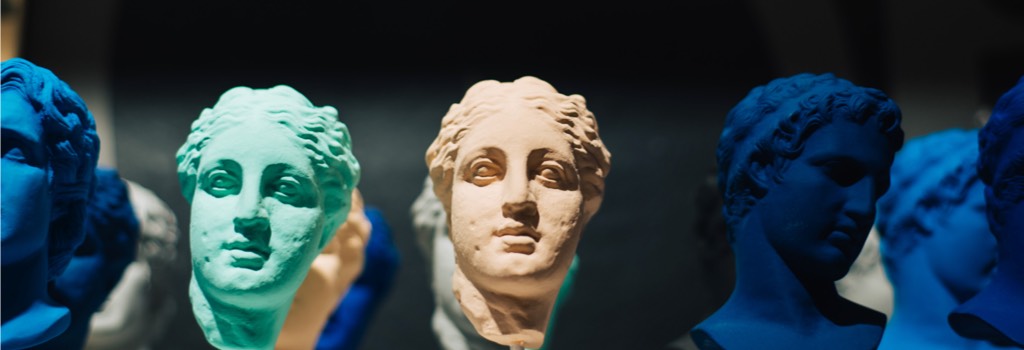
The 11th and 12th centuries were the Golden Age of Byzantine art in Athens. Almost all of the most important Byzantine churches around Athens were built during these two centuries, reflecting the growth of the town in general, as it turned into an important commercial center. The Monastery of Kaisariani, the Kapnikarea, the Catholicon of the Petraki Monastery, the Church of Agios Dimitrios Loumbardiaris, and the Church of Panagia Pantanassa are only several examples of the cultural heritage of the medieval era.
Modern Greece continued its outstanding performance in philology, the sciences, arts, music, and sports, with global distinctions. Legendary composers Mikis Theodorakis and Manos Hatzidakis, soprano Maria Callas, singer Nana Mouskouri, and the Oscar-winning musician Vangelis are only few of the distinguished Greeks who conveyed the greatness of Greek culture all over the world. George Seferis and Odysseus Elytis, leading figures in poetry, honored Greece with being awarded, in 1963 and 1979 respectively, the Nobel Prize in Literature. We continue to meet more and more Greeks who participate internationally in great scientific discoveries and inventions.
This glorious past lives on side by side with the exciting present of Athens: art galleries, outdoor festivals, street art, concert halls, and open-air cinema projections, to name only a few of the ways that Athenians choose to enjoy and express themselves. These experiences give birth to the ideas of tomorrow.

The country, in euphoria after undertaking the organization of the Olympic Games of 2004, became a driving force for the development of Greek cuisine. Restaurants opened one after the other, turning it into such a strong trend: we can now define Greek gastronomic fashion, expressed with purely Greek restaurants, and restaurants with modern cuisine alike. Furthermore, restaurants of high quality have been created in luxury hotels, confirming that gastronomy is an integral part of an upgraded travel experience.
Over the last twenty years, the most creative chefs in the country -many of them amongst the younger generation- show surprising ingenuity and productivity, influenced by the stormy developments of the world gastronomic scene. High-tech culinary techniques, ingenious conceptual specialties, and new national cuisines were added to Greek gastronomy, seasoning it with variety and surprises.
Numerous restaurants for many preferences are at the customers’ disposal. Some stay close to the centuries-old Greek culinary tradition; others leave a fresh stamp on it. Several have received prizes from international organizations; others are well-hidden treasures, waiting to be discovered. The future looks even brighter, as the multicultural facet of Athens has been creating new tastes for everyone to enjoy.
Tarcisio Celestino was previously ITA President (2016-19) and President of the Brazilian Tunnelling Committee. He was the Animateur of the ITA Working Group 12 on Sprayed Concrete Use (2005-10). He earned his doctorate degree in Civil Engineering (Rock Mechanics) from the University of California, Berkeley (1981).
He is currently Professor at the University of Sao Paulo and employed by Themag Engenharia Ltda., Sao Paulo (Brazil), where he leads the Geotechnical Engineering, Engineering Geology &Transportation Engineering Design Groups. He is also responsible for the geotechnical designs of several hydroelectric power plants, subways, highways etc., including major underground works (since 1990). He has also acted as consultant.
Professor Celestino continues to contribute his knowledge for the graduate courses & research areas on Rock Mechanics & Underground Works, at the São Carlos Engineering School, University of São Paulo and for the ITACET Foundation.
Our destination is the exploitation galleys of one of the largest underground mines of Attica. The chambers of metal extraction, rich in recognisable minerals, combine the mystery of ancient drifts with the beauty of caves. We will wander underground for up to 3 hours and explore the maize of drifts, the chambers supported by natural as well as carved-out pillars and the stalactites decoration reminiscent of natural caves. Each of the routes we follow hides surprises waiting to be discovered!
After we will visit the great “Chaos” sinkhole, a heart-shaped sinkhole formation 150m in diameter and 55m deep. This chiasm may have been formed by the collapse of a cave roof as many of the area’s mining tunnels end there.
Scientific theme: Underground mining activity in Lavrio
Duration: 6 hours inclusive
Detailed program
9.30-10.30 Athens-Lavrio
10.30-13.30 Underground mines
14.00-14.30 Stop at dolin “Chaos” and return to Athens
14.30 – 15.30 Lavrio-Athens
Cost per person: 40,00 €
*limited participation on a first come first served basis. In case participants are less than 20, the respective event will be cancelled and a refund wil be given.
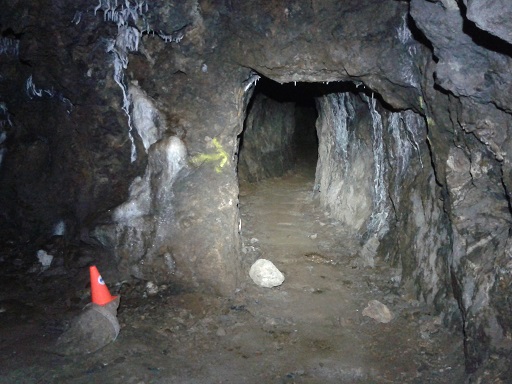
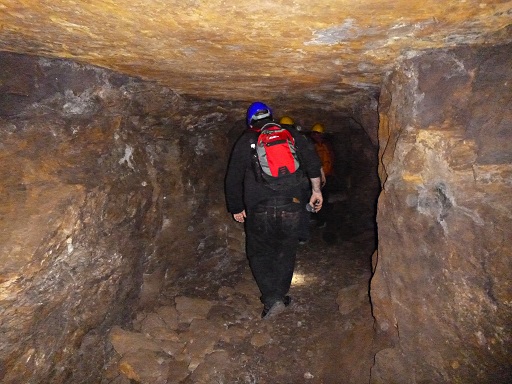
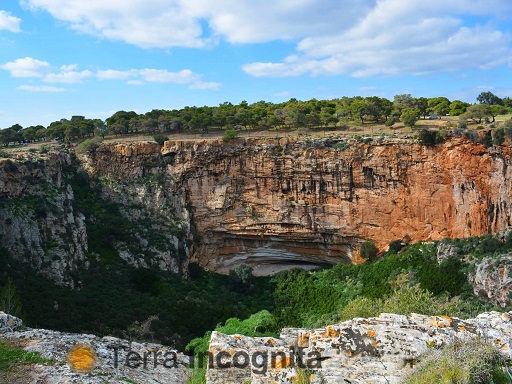
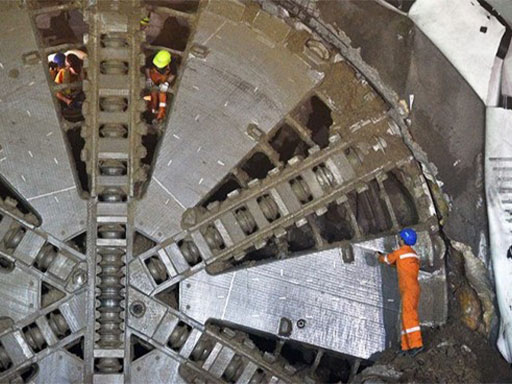
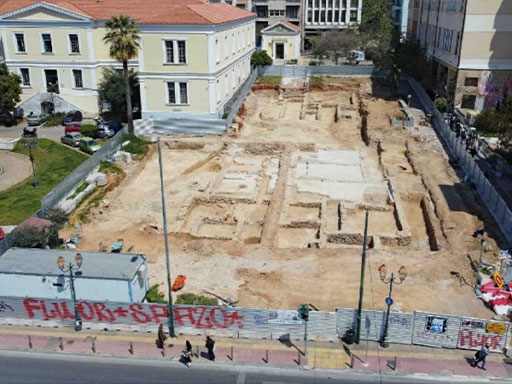
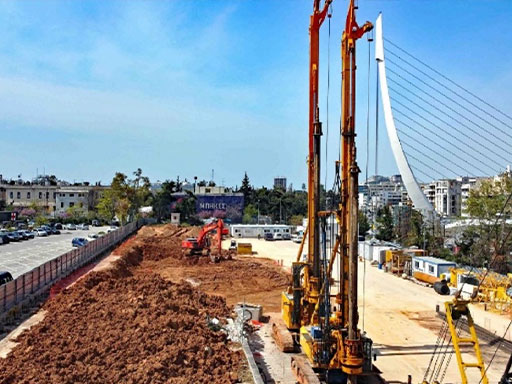
How many surprises can the Athens underground have in store for its visitors? The stroll will start from underground shelters and detention areas of the German Kommandatur, remnants of the 2nd World War in Athens. Then, we will take the steps that start off under a timeworn trap door on the side of a road or hidden away in a sidewalk flower–bed, that will lead us in a different, forgotten underground area of the city! For hundreds of years, underground pathways have been used for various and mysterious purposes. Some say that all underground pathways are interconnected although there is no proof of this. Nevertheless, the allure of an unknown world is always there, beneath the ground we walk on. We lift up the antiquated hatch and descend the stone steps. In the catacomb, we come across tunnels of ancient aqueducts, roman baths and byzantine crypts. The Athens river is also found hidden below the ground, running in old galleys under the most central streets of Athens – we can hear the cars passing over our heads!
We invite you to discover together the hidden secrets of our city!
Scientific theme: underground constructions of the 19th and 20th century.
Duration: Maximum of 4 hours.
Detailed program:
11.00 Meeting outside Metro Station Panepistimio
11.30 Memorial Site (Korai Street). Two-level underground shelter below the Mansion of Ethniki Insurance Company.
13.00 Catacombs of the Russian Church (Filellinon Street). Inside the catacombs a tunnel and a shaft from ancient Peisistratus aqueduct, ruins from roman baths and crypts of the Byzantine order of Likodimos -11th century.
14.00 Ilissos River (area of Panathenaic Stadium). The buried riverbed of Athens river Ilissos.
Cost per person : 35,00 €
*limited participation on a first come first served basis. In case participants are less than 20, the respective event will be cancelled and a refund wil be given.
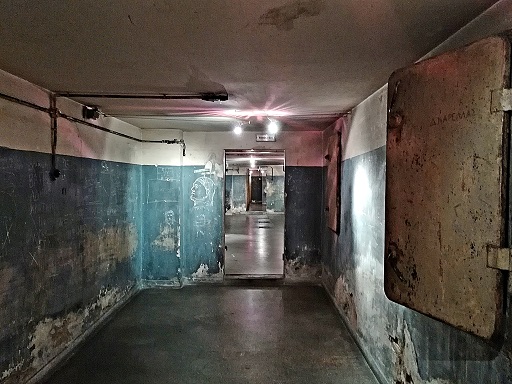
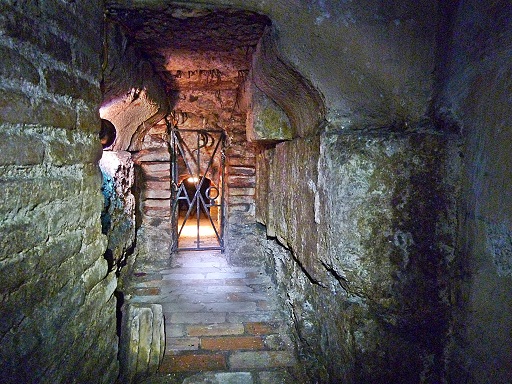
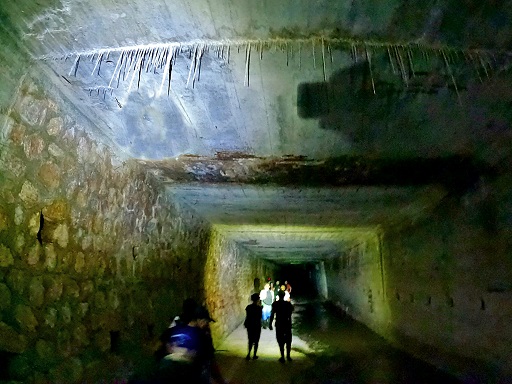



Professor Kyriazis Pitilakis has more than forty years of intensive academic, research and professional experience in civil, earthquake and geotechnical engineering. Vice-President of the European Association of Earthquake Engineering (EAEE), ex- Chairman of the Technical Committee “Geotechnical Earthquake Engineering andAssociated Problems” (TC203) of the International Society of Soil Mechanics and Geotechnical Engineering (ISSMGE), and past President of the Greek Society of Earthquake Engineering. He is presently Professor Emeritus in Aristotle University, Thessaloniki, Greece and since 2019 visiting Professor in Tongji University, International Laboratory of earthquake Engineering (ILEE), Shanghai, China.
Coordinator and scientific responsible of numerous European research projects, namely EUROSEISTEST and SYNER-G, he has a long experience in European research activities in earthquake engineering, geotechnical engineering, vulnerability and risk assessment of civil engineering structures, infrastructures and lifelines. According to the recent Stanford classification he is among the top 10 leading researchers in Civil Engineering in Greece, and among the top 10 leading international researchers in specific topics like Soil Dynamics, Engineering Seismology and Geotechnical Earthquake Engineering.
Chairman of several international conferences including the 16th European Conference of Earthquake Engineering, Thessaloniki 2018 and invited keynote lecturer in many International Conferences. Author of more than 650 scientific papers (h-factor 57) published in peer review scientific journals, and conference proceedings, author and co-author in several books, editor of four books published in Springer Editions, all in relevant subjects of earthquake engineering, seismic risk and geotechnical earthquake engineering. Professor Kyriazis Pitilakis is founder and coordinator of EUROSEISTEST, a large scale experimental facility in earthquake engineering, soil dynamics and engineering seismology that is unique in Europe and worldwide. He supervised more that 30 PhD thesis and numerous of his students hold academic positions in Greece and worldwide.
Professor Kyriazis Pitilakis is strongly involved in the ongoing revision of EC8 (Part 1-Seismic Actions and Part 5-Seismic design of foundations, retaining structures, soilstructure interaction, liquefaction, slope stability and underground structures), while he has been international expert for the revision of other seismic codes worldwide.
He is member of the editorial advisory board in Springer editions (Geotechnical, Geological and Earthquake Engineering), member of the editorial board and reviewer of numerous scientific journals and member of many international societies in earthquake and geotechnical engineering.
Honors: Chevalier dans l’Ordre des Palmes Academiques, French Republic.
Thessaloniki 06.06.2022
The 12th Muir Wood lecture will be delivered by Professor Marc Panet during the WTC2023 in Athens. His nomination being a Muir Wood lecturer was proposed by the French Tunnelling & Underground Space Association (AFTES) as per ITA’s Statues and By-laws.
Marc Panet graduated in Civil Engineering at the École des Mines de Paris and obtained a Master degree at the University of California at Berkeley. He started his career in 1965 at the Laboratoire Central des Ponts et Chaussées, in Paris, where he was a Research Engineer, Head of the Geotechnical Department and Technical Director. In 1982 he joined the SHP Group, in Paris, as Scientific Director. From 1984 to 1996 he was the President and CEO of SIMECSOL; and from 1996 to 2000 President and CEO of FC International SA. Since then he has been working as a consultant. He taught at the École Nationale des Ponts et Chaussées, at the École des Mines and at the École Centrale des Arts et Manufactures, in Paris.
Marc has been in charge of numerous studies in geotechnical engineering for underground works, highways, bridges, and natural hazards. Among the main projects are: the Mont Blanc Tunnel (11.6km), the Frejus Road Tunnel (12.9 km), the Large Electron–Positron Collider (CERN in Geneva), the Channel Tunnel (from 1967 to the end of the construction), the Millau Bridge, the Loetschberg Base Tunnel (43 km), subways in Paris, Rennes, Caracas, Athens and Algiers, the slides of the city of Constantine (Algeria), the project of the suspended bridge on the Straits of Messina (Italy) and the project of the cable-stayed bridge on the Golden Horn (Turkey). He is presently involved in a large number of geotechnical projects.
He is the author of a large number of publications in professional journals and international conferences and of the well-known book “Calculation of tunnels using the convergence-confinement method”.
Marc Panet is a Honorary Member of the French Academy of Technology, Knight of the National Order of Merit and Knight of the Order of Academic Palms.